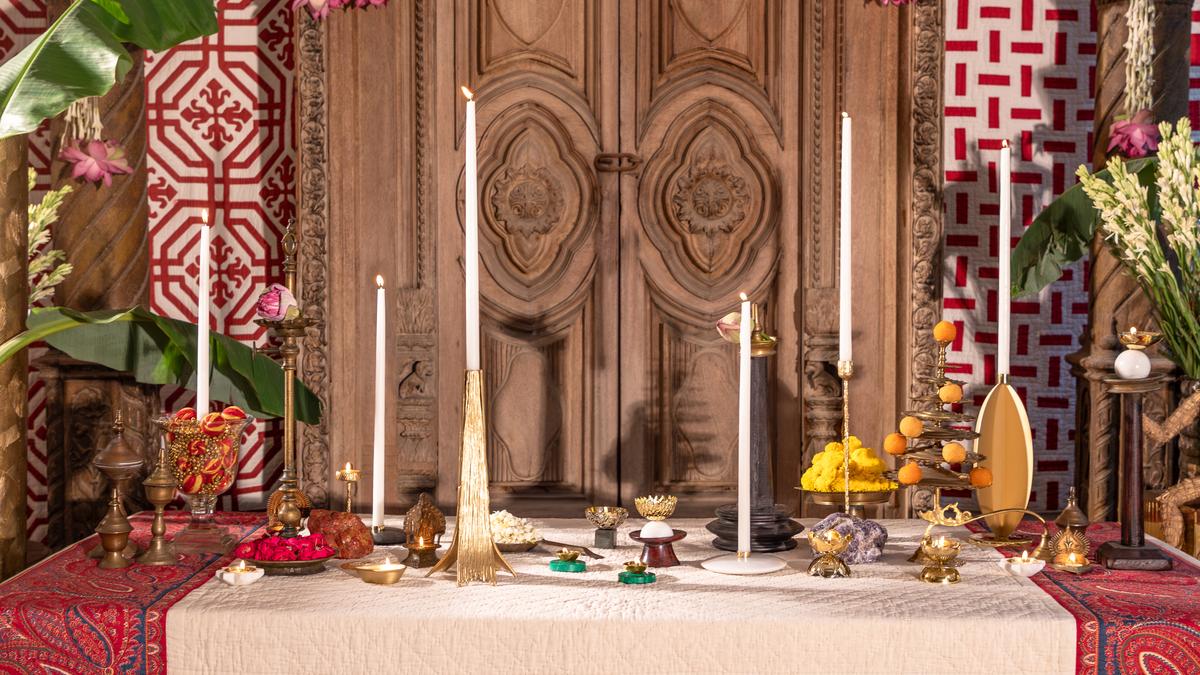
Eeshaan Kashyap x Sarita Handa | In the mood for ghungroo
The Hindu
Eeshaan Kashyap's unique tablescaping and home decor pieces blend traditional Indian motifs with contemporary materials and designs.
Chef turned designer and artist Eeshaan Kashyap likes to use both food and tablescaping to narrate stories. His projects have ranged from India Art Fair collaterals to the launch events of luxury brands like LilaNur Parfums, where colour, texture, and pattern come together in the most unexpected ways. A few years ago, he presented Tablescape, his own selection of ceramics and home decor accessories created by artisans across the country, from Tamil Nadu to Kashmir and Moradabad. Materials range from clay and metal to wood, semi-precious stones, and paper. But what adds to the mix is Kashyap’s collaborations, especially the recent festival-ready line with luxury furnishings brand, Sarita Handa.
“The Anjali motif from Mrs Handa’s archives is one of the main inspirations behind these collaborations,” says Kashyap about the resurrected motif, while elaborating on how the word also means an offering with folded hands — a symbolic interpretation of how Indians greet. There are floral references like the Mogra and Champaka diyas. The Tilaka diya, inspired by the shape of the sacred forehead marking, is crafted in cast brass with a gloss finish. Both Kashyap and Handa have tried to reimagine festive decor in everyday elements apt for contemporary homes by “simplifying ornate patterns and using contemporary materials” according to the former.
Most popular this season is the Ghungroo bowl, an homage to the artistic heritage of India, with ghungroo embellishments on a brass bowl. “The goal is to retain the cultural essence while making the pieces feel fresh and relevant for modern homes,” says Kashyap about these handmade pieces made in Delhi by a team of trained craftsmen who still use traditional techniques to create brassware. The diyas, serveware and other design accents created in brass, marble and matte nickel finish ensure functionality beyond the festive seasons.
While mentioning the importance of tablescaping, especially during festivities, Sarita Handa explains how the colours and the print on crockery vis-à-vis the embroidered table linen must have complementary patterns for impact. The duo highlights that the diyas in the collection can be used in multiple ways — from being a tea light to a part of an aesthetic table or flower arrangement. “The lighting should always be moderate; natural sunlight gleaming over the dining table looks great during the day,” Handa adds, emphasising that one should use vibrant colours in the setting to celebrate the mood.
₹2,500 onwards
saritahanda.com
